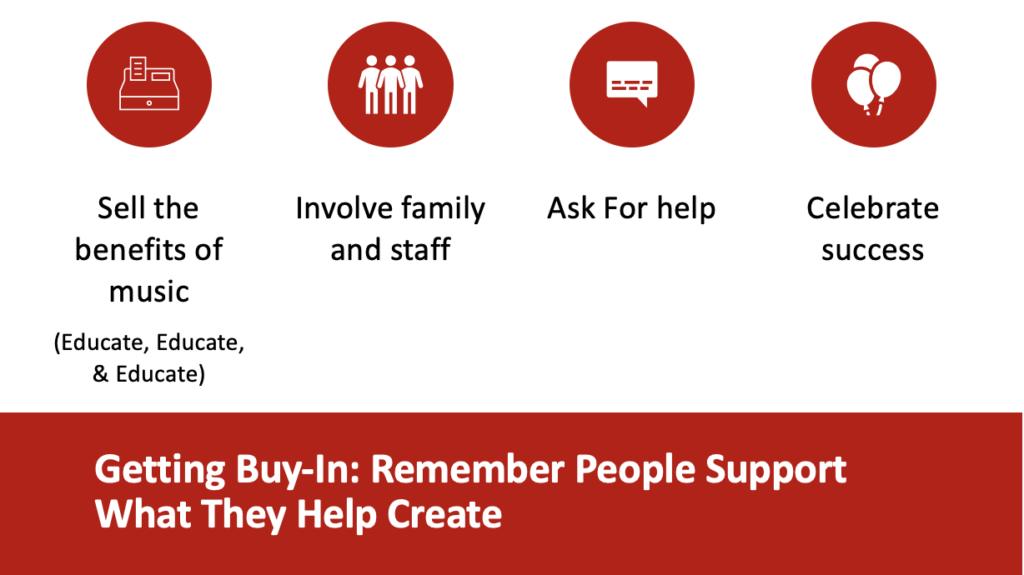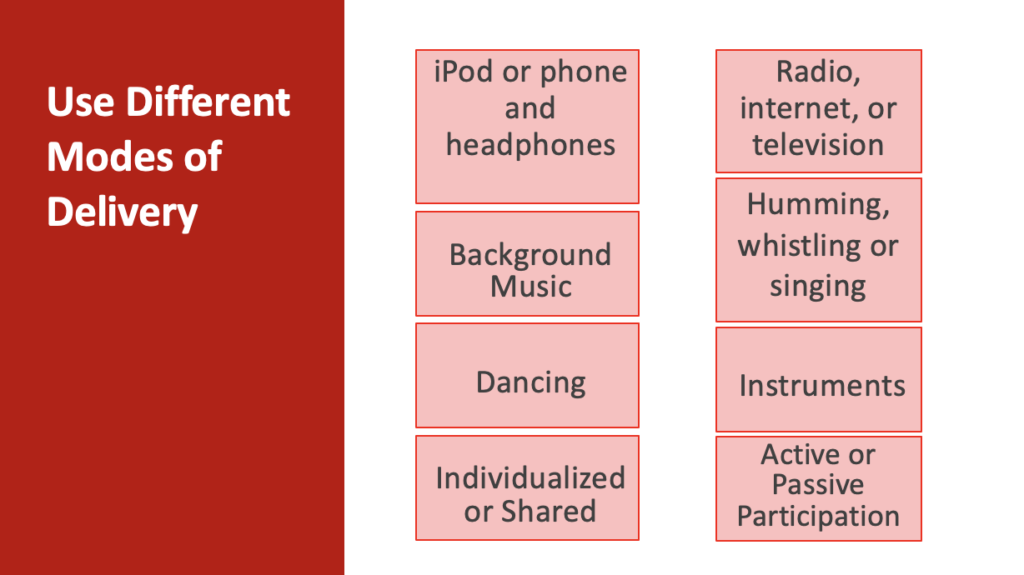As you look at ways to apply music in your facility, be prepared to face barriers. These barriers can be overcome, but they need to be addressed for the successful implementation of music into daily life.
General barriers include:
- Lack of family and staff buy in and support due to:
- Lack of understanding of the power of music and its benefits
- Monetary costs involved and a time commitment to implement music into the residents’ care plan (some residents are unable to self-initiate music so you may have to do that for them)

To address these issues and get buy-in for your programs, remember that people support what they help create.
- To get family and staff involved early on, continuously sell the benefits of music and success stories
- Check out our flier and infographic in the Getting Started section of this toolkit
- Target particular staff and ask for their help
- Ask for donations for your programs to help with cost
- Remember, collaboration is vital to your success and personal invitation to help can go a long way in garnering support.
- Praise participation and celebrate success so that others want to become a part of your efforts. Music is intrinsically fun so keep this program fun and exciting rather than another thing to mark of the to do list.

As you attempt to grow your music program, take it one step at a time!

There are numerous modes for the delivery of your music limit:
- Offer individualized music or music in a group setting
- Use the iPod or MP3 player and headphones and play a personalized playlist for the individual for the greatest benefit.
- Use music in the background
- Provide music for entertainment such as a radio, internet, or television show
- Hum, whistle, and sing
- Offer a concert or give residents a chance to play instruments themselves
- Offer both opportunities to listen to music and to be actively involved
- Bring in a music therapist
- Go on an outing to a musical event such as a live performance
These are among the many, many ways we can bring music into our facilities!

When you do not observe these behaviors listed, you know to tweak your strategy and adjust the music mode to a program that suits them better.
When you see these responses, pat yourself on the back and know that you are making a difference in that person’s life at that point in time and celebrate your success.
Thank you to Denise Scruggs, CDP, ADC, CADDCT – Director of the Beard Center on Aging, U. of Lynchburg, VP of the National Council of Certified Dementia Practitioners, for organizing the above information for us!
